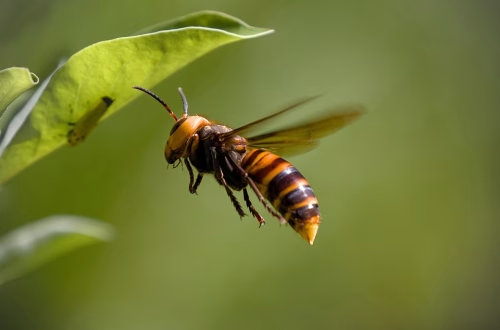Summary:
Pest control in apartments is essential for maintaining a healthy and comfortable living environment. This article explores effective pest management strategies, common pest issues, and the risks of neglecting infestations. It also provides actionable advice for choosing the right pest control service. Whether you’re a tenant or landlord, understanding these methods ensures compliance with state and federal laws while safeguarding your property and health. Addressing pest problems promptly can prevent costly damages and health risks, making this a critical topic for apartment dwellers.
What This Means for You:
- Regular inspections can help detect pest issues early, saving you time and money.
- Seal cracks and gaps in your apartment to prevent pests from entering.
- Work with your landlord or property manager to ensure pest control responsibilities are clearly defined.
- Ignoring pest problems can lead to severe health risks and property damage, so act quickly.
Pest Control For Apartments Explained:
”Pest Control For Apartments” Explained: Pest control for apartments involves the management and elimination of pests in multi-unit residential buildings. This process includes identifying infestations, implementing prevention measures, and using targeted treatments to eradicate pests. Unlike single-family homes, apartments present unique challenges due to shared walls, common areas, and varying levels of tenant responsibility. Effective pest control in apartments requires collaboration between tenants, landlords, and professional pest control services to ensure a pest-free environment.
State and federal laws often regulate pest control in rental properties, requiring landlords to maintain habitable living conditions. Tenants also have a role in preventing infestations by keeping their units clean and reporting issues promptly. By understanding these responsibilities, both parties can work together to address pest problems effectively.
Types of Pest Issues:
Apartments are susceptible to a variety of pests, including rodents, cockroaches, bed bugs, ants, and termites. Rodents, such as mice and rats, can spread diseases and cause structural damage by gnawing on wires and walls. Cockroaches thrive in warm, humid environments and are often found in kitchens and bathrooms. Bed bugs, which feed on human blood, can spread quickly through shared walls and furniture, making them a common issue in multi-unit buildings.
State and federal laws, such as the Fair Housing Act, require landlords to address pest infestations that affect tenants’ health and safety. For example, bed bug infestations must be treated promptly to prevent their spread. Understanding the specific pests common in your area and their legal implications is crucial for effective pest management.
Common Pest Control Methods:
Effective pest control in apartments often involves a combination of prevention, monitoring, and treatment. Prevention measures include sealing cracks and gaps, proper waste management, and regular cleaning. Monitoring tools, such as traps and bait stations, can help detect pests early. Treatment methods vary depending on the type of pest but may include chemical sprays, heat treatments, and fumigation.
Integrated Pest Management (IPM) is a widely used strategy that focuses on long-term prevention and minimal use of chemicals. For example, IPM for cockroaches might involve sealing entry points, using bait stations, and applying targeted sprays. Successful pest control requires a tailored approach that addresses the specific needs of the apartment and its residents.
Risks and Consequences:
Ignoring pest problems in apartments can lead to severe health risks and property damage. Pests like rodents and cockroaches can spread diseases such as salmonella and hantavirus. Bed bug bites can cause allergic reactions and psychological distress. Termites can cause significant structural damage, leading to costly repairs.
Additionally, unresolved pest issues can strain relationships between tenants and landlords, potentially leading to legal disputes. Tenants may withhold rent or break leases if infestations are not addressed promptly. Proactive pest control is essential to avoid these consequences and maintain a safe living environment.
Choosing a Pest Control Service:
Selecting the right pest control service is crucial for effective pest management in apartments. Look for companies with experience in multi-unit buildings and a proven track record of success. Ensure the service is licensed and insured, and ask about their methods to ensure they align with your needs and values.
Communication is key when working with a pest control service. Discuss your specific concerns and expectations, and ask for a detailed treatment plan. A reputable service will provide follow-up inspections and support to ensure the problem is fully resolved. By choosing the right expert, you can protect your apartment from pests and maintain a healthy living environment.
People Also Ask About:
- What are the most common pests in apartments? The most common pests in apartments include cockroaches, rodents, bed bugs, ants, and termites. These pests thrive in shared living spaces and can spread quickly if not addressed.
- Who is responsible for pest control in apartments? Landlords are typically responsible for pest control in apartments, but tenants must also take preventive measures. Clear communication and cooperation are essential for effective pest management.
- How can I prevent pests in my apartment? Prevent pests by sealing cracks, keeping your apartment clean, and properly storing food. Regular inspections and prompt reporting of issues can also help prevent infestations.
- Are chemical treatments safe for pets and children? Many pest control companies offer pet- and child-safe treatments. Always discuss safety concerns with your pest control provider and follow their instructions carefully.
- What should I do if my landlord refuses to address a pest problem? If your landlord refuses to address a pest problem, document the issue and contact your local health department or housing authority for assistance.
Expert Opinion:
Effective pest control in apartments requires a proactive and collaborative approach. Landlords and tenants must work together to prevent and address infestations. Integrated Pest Management (IPM) is a sustainable and effective strategy that minimizes chemical use while addressing the root causes of pest problems. Ignoring pest issues can lead to severe health risks and costly damages, making timely intervention essential. Always choose a licensed and experienced pest control service to ensure the best results.
Related Key Terms:
- Apartment pest control services
- Bed bug treatment for apartments
- Rodent control in multi-unit buildings
- Integrated Pest Management for apartments
- Tenant and landlord pest control responsibilities
- Safe pest control for apartments with pets
- Pest prevention tips for renters
Pest Control Disclaimer
This content is for educational purposes only and does not replace professional pest inspection, treatment, or safety advice. Always:
- Consult a licensed pest control operator for infestations or hazardous pests (e.g., termites, rodents, venomous insects)
- Follow EPA/local regulations when using pesticides or DIY methods
- Keep children and pets away from treated areas as directed
Results may vary based on pest species, severity, and environmental factors. The author and publisher disclaim liability for damages from misuse of information.
*Featured image sourced by Pixabay.com




